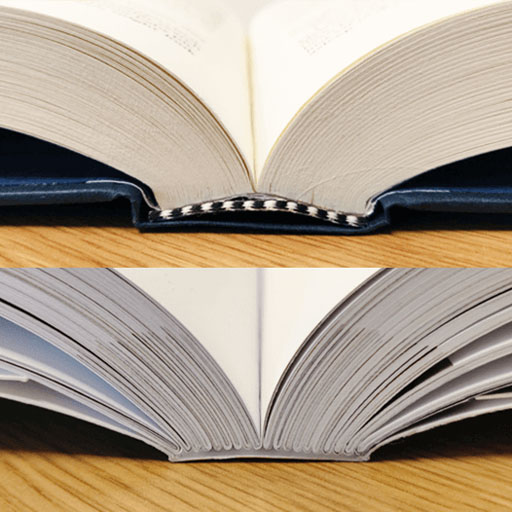
This cost-effective form of bookbinding is reserved for books that people wouldn’t want to collect, but does the job publishers and other groups want of getting the message out to people. Some hardbound books use paperboard cover as well, but it is tightly glued and sewn for durability whereas paperback books are just glued. Its covers are made with thick paper or paperboard. Paperback books are also known as softcover or softback books. Here’s a video demonstrating one way of hardcover bookbinding by hand. This can be done by hand (which is better for restoration, repairs, and other custom jobs that require human hands) or through high-speed commercial machinery (for mass-market production). Hardcover books are made through a process called bookbinding.

Some libraries want to preserve old paperback books that are starting to take damage or do not have a hardbound version. It’s possible to turn a paperback book into a hardbound book through repairing and restoration. This may be to lower the costs of textbooks, since some students may not be able to afford books if they were hardbound in thicker material. However, most textbooks are bound in thick board paper. Some books – such as law books and other old books – are wrapped in sturdy boards. A hardcover book may also have a paperback version if it is a book the masses want to get their hands on but can’t afford the hardcover, or if the publisher expects they’ll get more sales in paperback than in hardbound.Īside from popular novels and fiction, most textbooks and other academic reading materials are hardcover. But a novel that isn’t very good and written by a not-so-famous author will most likely come in paperback because not many people will want to buy and keep the novel. Rowling, for example, come in hardcover books because it’s highly likely people will want these books to be durable. The Harry Potter books of the author J.K. Other books may not have the dust jackets and just have the design printed directly on the cover.īecause of the price, hardcover-type books are usually reserved for books with anticipated high sales. Some of these books have dust jackets, which are thin outer covers made of paper decorated to look like the outer cover of the book but are just there to protect the outer cover from external damage. Hardcover books are more durable, but they cost more than paperback books. If you looked for hardcover books under the ISBN list, these are the books with sequence numbers that have the abbreviation “Hbk” on it. They take its name from the thick and hard covers which can be made with durable materials like Binder’s board, paperboard, buckram, thick cloth, or leather. These are also known as hardback, hardbound, and case-bound books. So, the next time I shop and come across a book I want to buy available in both hardcover and paperback, here’s what I (and you too!) should consider. I did my research and soon found there really was a big difference between the two.

I didn’t see a difference between hardcover and paperback books and kept both types in my collection, but apparently for many people, it was easy for them to dispose or give away paperback books. His response? “It’s fine – they’re paperback novels.” So when a professor of mine mentioned in passing that he throws away novels immediately after he finishes reading them during long flights, you can imagine my surprise that someone would actually throw away a perfectly good book. As an avid bookworm, I prefer to read books on paper rather than on Kindles or mobile devices, which is why I’m very cautious at handling and storing all the books I buy.


 0 kommentar(er)
0 kommentar(er)
